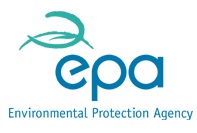
Over ninety private water supplies, affecting over 5,400 people, were found to be on boil water notices, says EPA.
- One fifth of the population, mostly in rural areas, get their drinking water from private water supplies. The remainder of the population is supplied by public water supplies which are the responsibility of Irish Water.
- Boil water notices were imposed on 94 private water supplies during the 2015 reporting period, affecting a population of over 5,400. This compares to a total population of 3,770 with boil water notices in public water supplies today.
A special report focusing on the quality of Private Water Supplies in Ireland, released recently by the EPA, shows that twenty percent of the population are supplied by private supplies – mainly through group water schemes, or small supplies/wells operated by the owners of buildings/businesses as part of a public or commercial activity.
Commenting on the findings of the report, Mr. Gerard O’Leary, Director of the EPA’s Office of Environmental Enforcement said,
“Despite recent improvements to private water supplies, there were 94 private water supplies affecting over 5,400 people on boil water notices. Further improvements are required to ensure that people on private water supplies have access to clean and wholesome drinking water.”
Monitoring results show that private water supplies to commercial businesses (hotels, B&Bs, pubs, etc) or to buildings where the public has access (schools, crèches, campsites, etc) are at greater risk of being contaminated. The report highlights that more than sixty of these supplies were found to be contaminated with human or animal waste at least once during the reporting year.
Concluding, Darragh Page, Senior Inspector of the EPA’s Office of Environmental Enforcement said,
“Local authorities have extensive enforcement powers to ensure that action is taken where water quality issues are identified in private supplies. Where such issues are identified and the water supplier is unwilling to take action the local authority should exercise its enforcement powers to ensure that consumers are protected.”
The report is available on the EPA website. Infographics explaining the report are also available.





